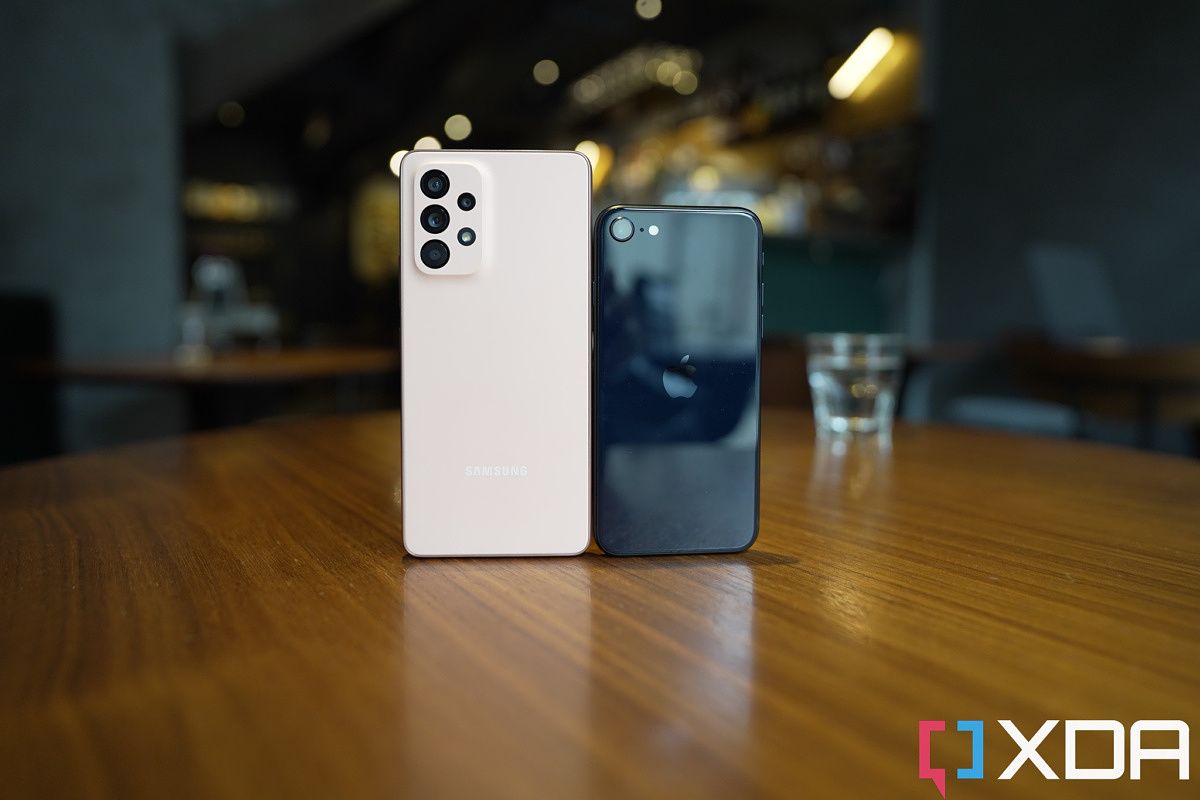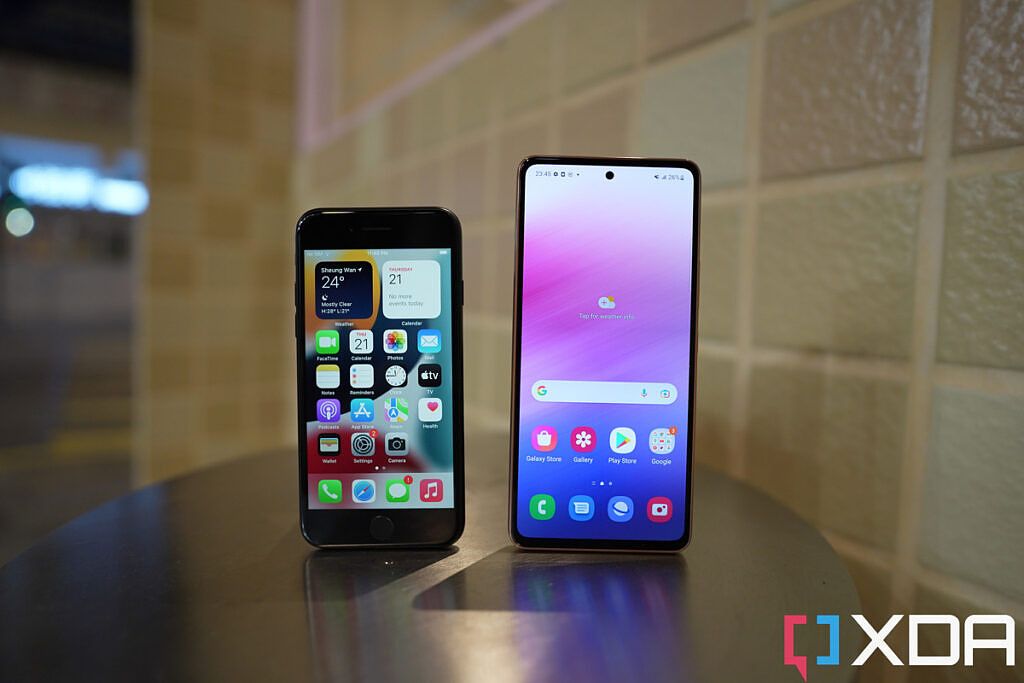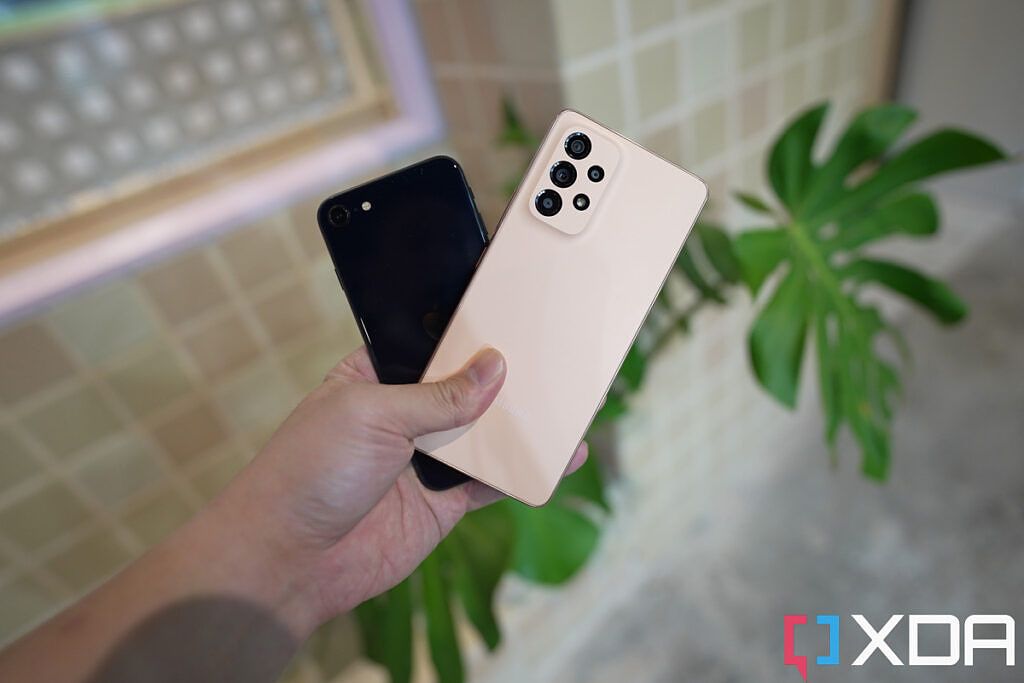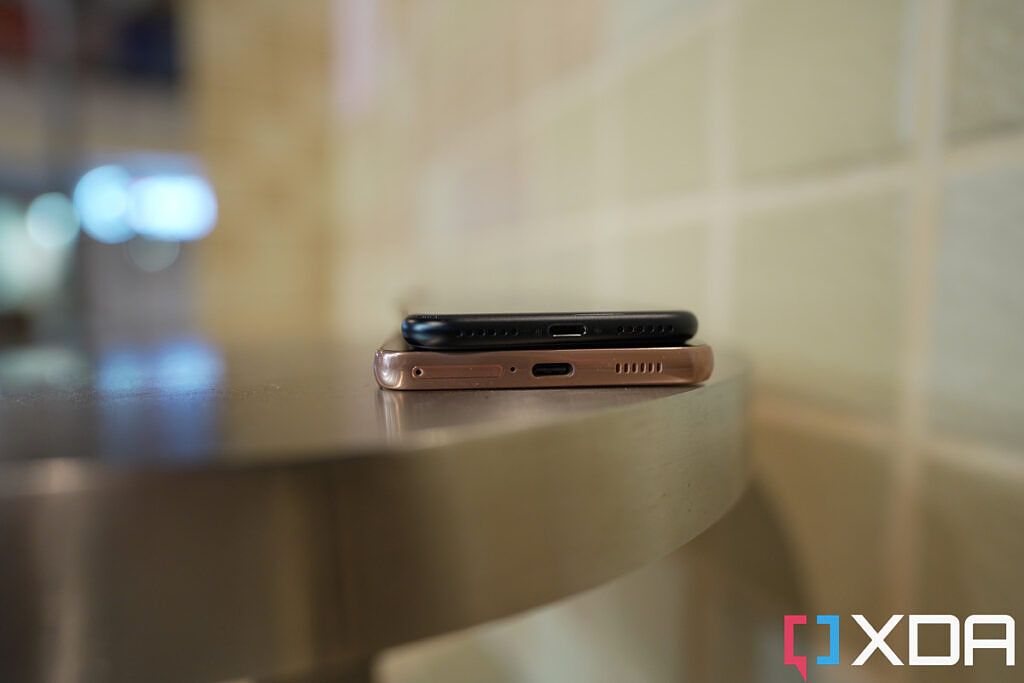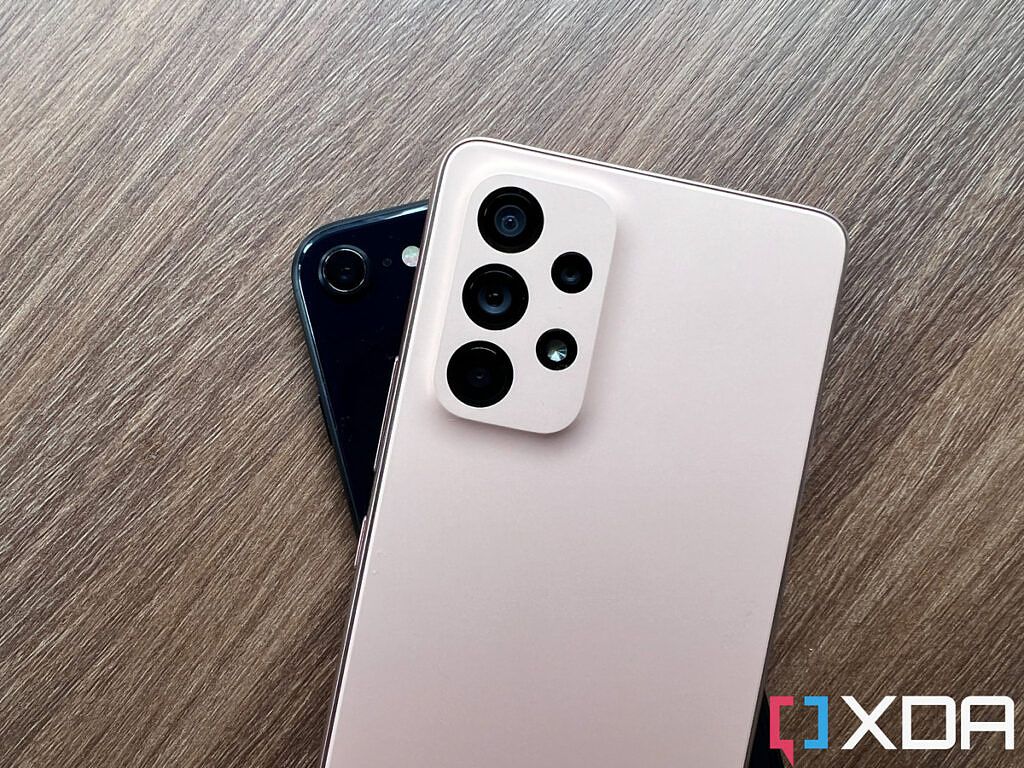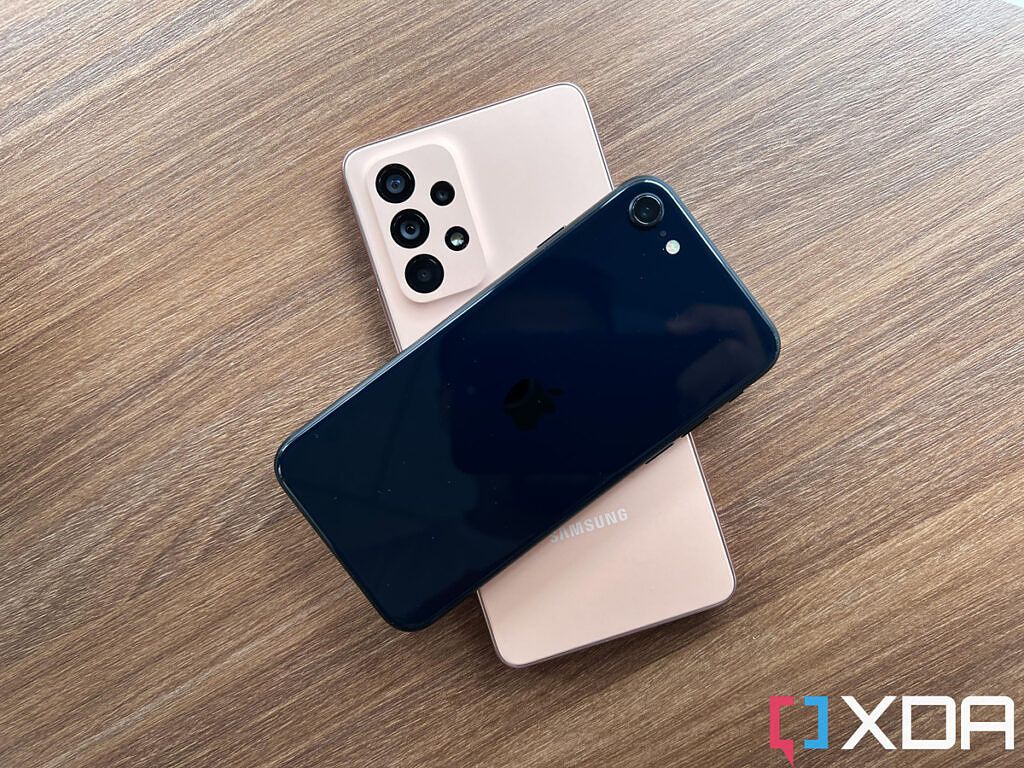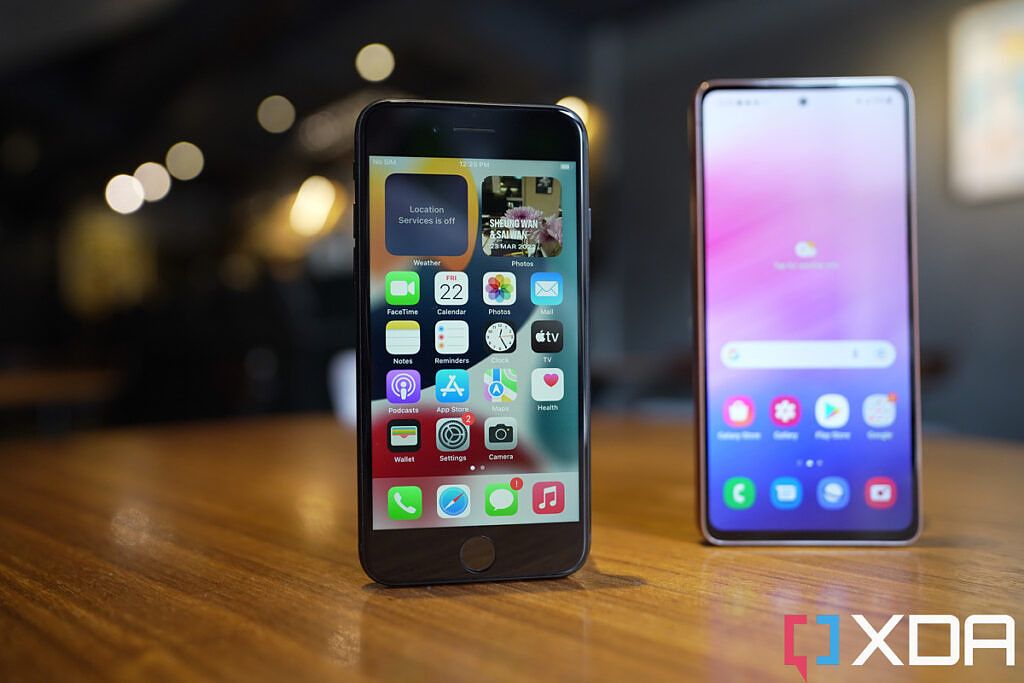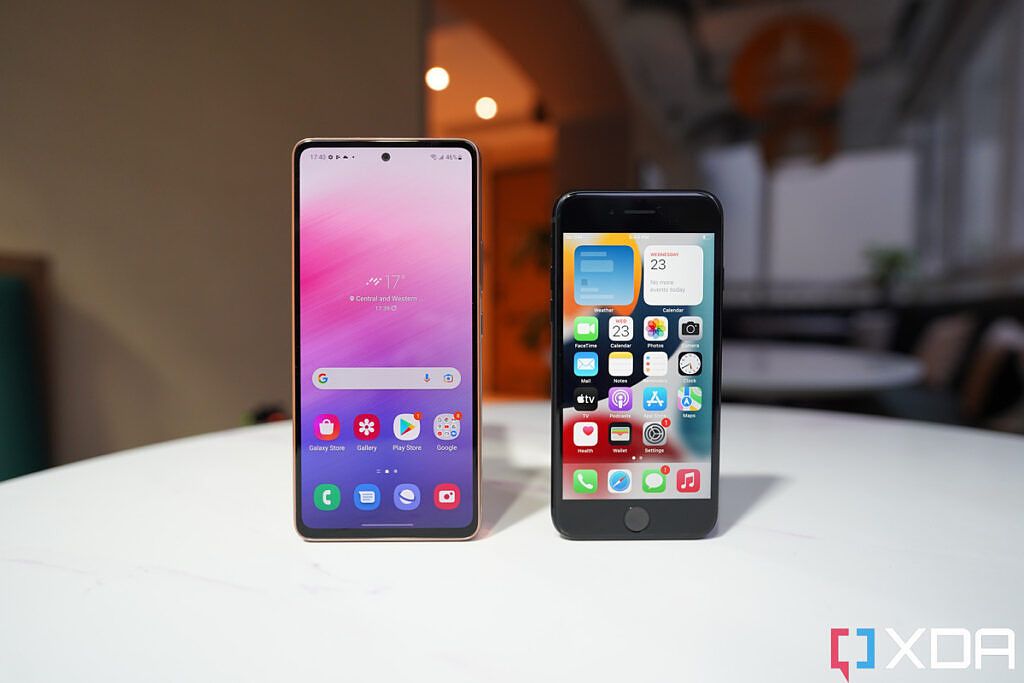When it comes to comparing phones, there is no comparison more apt than Apple's iPhone against Samsung's Galaxy, because they are the two biggest and most prominent phone brands in the world, and in chunks of the world including and especially the US, they represent iOS vs Android for the average consumer. We've already pitted the absolute best premium offerings from both brands against each other, now it's time for the mid-range battle: the third-generation iPhone SE vs the Samsung Galaxy A53 5G.
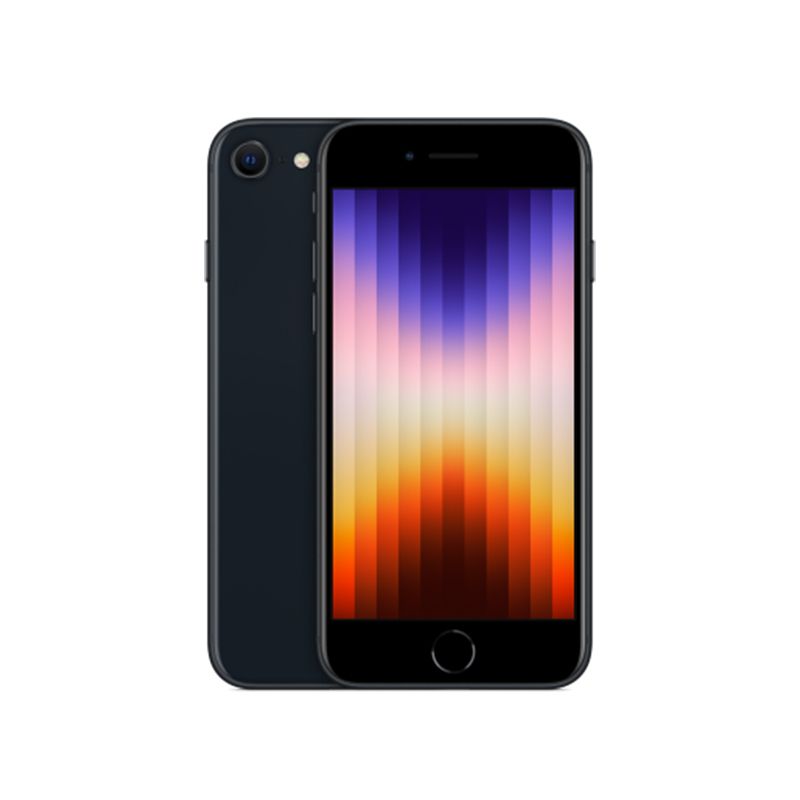
Apple iPhone SE (2022)
Apple's third-generation iPhone SE packs the most powerful mobile SoC but in a dated design
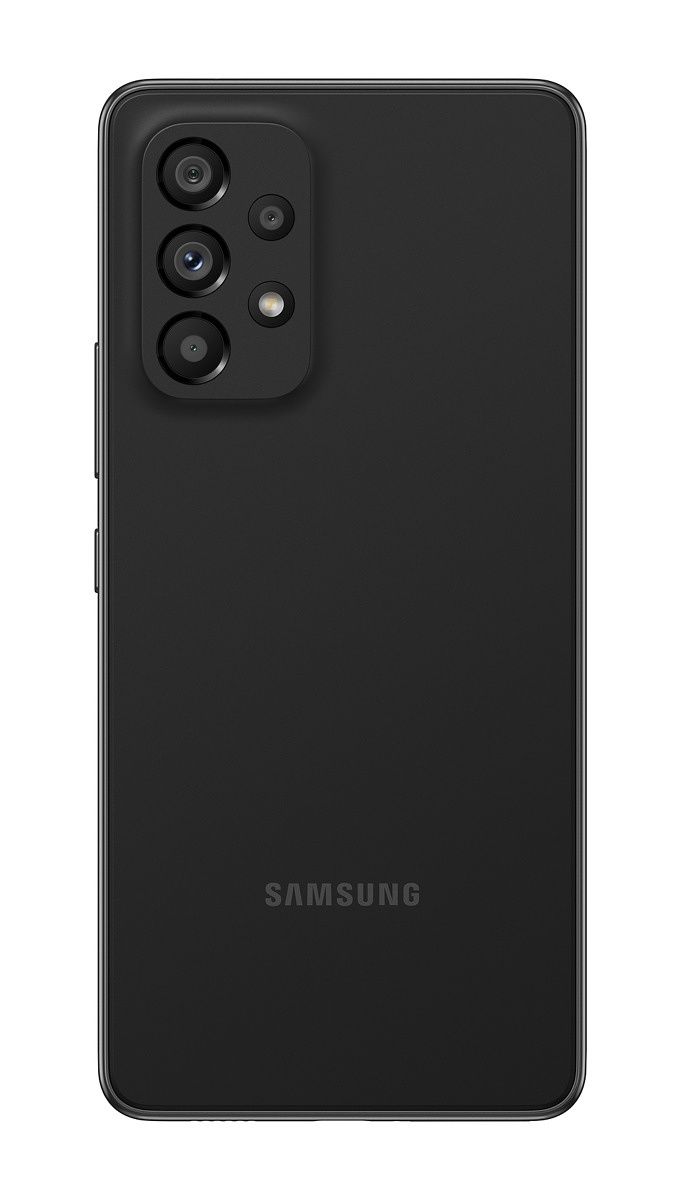
Samsung Galaxy A53 5G
Samsung's A53 brings a thin-bezeled OLED panel with high refresh rate but a plasticky frame
Samsung Galaxy A53 5G vs Apple iPhone SE 3: Price and Availability
Both the Galaxy A53 and third-generation iPhone SE, which we will call iPhone SE 3 going forward for simplicity, are available practically across the globe. Prices are:
- The iPhone SE 3 starts at $429 for the 64GB base variant and jumps to$479 for 128GB or $579 for 256GB storage
- The Galaxy A53 in the US comes in only a 128GB variant, priced at $449. Although in some parts of the world, including Hong Kong where I am based, the A53 has a 256GB variant priced at the equivalent of around $510
Samsung Galaxy A53 5G vs Apple iPhone SE 3: Specifications
|
Specifications |
Apple iPhone SE (2022) |
Samsung Galaxy A53 5G |
|---|---|---|
|
Build |
|
|
|
Dimensions & Weight |
|
|
|
Display |
|
|
|
SoC |
|
|
|
RAM & Storage |
|
|
|
Battery & Charging |
|
|
|
Security |
Touch ID capacitive fingerprint scanner |
Optical in-display fingerprint scanner |
|
Rear Camera(s) |
|
|
|
Front Camera |
7MP, f/2.2 |
32MP, f/2.2 |
|
Port(s) |
Lightning |
USB-C |
|
Audio |
Stereo speakers |
Stereo speakers |
|
Connectivity |
|
|
|
Software |
iOS 15.4 |
One UI 4.1 over Android 12 |
|
Other features |
|
|
About this comparison: This review was written after testing an iPhone SE (2022) provided by Apple Hong Kong and a Galaxy A53 provided by Samsung Hong Kong for the past couple of weeks. Neither Apple nor Samsung had any input in this article
Samsung Galaxy A53 5G vs Apple iPhone SE 3: Design and Hardware
In order to meet this sub-$500 price that's less than half of what their top phones cost, both Apple and Samsung had to compromise on hardware and features, and it's interesting to see the opposing approach each brand has taken. Apple has just about sacrificed looks and modern design with the iPhone SE 3: it recycles the same outer shell and components of the five-year-old iPhone 8. And if we're being honest, the iPhone 8's design was outdated even back in 2017 -- so the iPhone SE 3's nearly inch-thick bezels, 60Hz LCD display with pointy screen corners feel even older than five years old. But while the phone is no looker, it packs Apple's absolute flagship 4nm A15 Bionic chip, which is currently the most powerful mobile processor in the world. Let that sink in.
Samsung's Galaxy A53 5G, meanwhile, has modern looks, with thin bezels, a 120Hz OLED display, and a quad-lens camera system. Of course, if you know your smartphones and you nitpick, you can quickly find areas of compromise like the plastic back and the fact that two of the cameras are somewhat pointless depth and macro sensors. But to the layman's eyes, the Galaxy A53 5G would not look out of place next to other 2022 release. However, the Galaxy A53 5G is powered by a noticeably mid-tier Exynos SoC.
Apple chose to settle on looks, Samsung chose to settle on brains
In other words, Apple chose to settle on looks, and Samsung chose to settle on brains.
Samsung Galaxy A53 5G vs Apple iPhone SE 3: Display
The giant bezels of the iPhone SE 3 are a divisive point. For a gadget geek like me, and I'm guessing many XDA readers, they're just far too large, eating into what should be real estate for the screen. But I have heard other consumers -- generally the older, more casual crowd -- say they don't mind the bezel, and even welcome the return of the home button, which offers a tactile way to operate the phone as well as bring back Touch ID. That's fine, I'm willing to concede maybe not everyone cares about thin bezels.
But what can't be argued is that iPhone SE 3's 60Hz LCD screen is objectively inferior to the Galaxy A53's 120Hz OLED panel. Whether it's looking at photos, watching videos, or reading text, it's just a more enjoyable experience on the Galaxy A53 -- colors pop off the screen more, the display gets brighter and pumps out better contrast. The iPhone SE 3's 4.7-inch screen is also very cramped by almost any modern smartphone standards. And despite the Galaxy A53 having a much larger 6.5-inch display, I don't find the phone more difficult to use with one hand, because Android is more one-hand friendly: I can, for example, just put all my core apps at the bottom of the screen, I can use a more dense grid so the space between app icons are smaller (thus less likely to spill out of reach of my thumb vertically or horizontally).
Samsung Galaxy A53 5G vs Apple iPhone SE 3: Silicon and Performance
Apple's A15 Bionic has no problem outperforming the Qualcomm Snapdragon 8 Gen 1 that's powering Samsung's Ultra flagship, so it of course takes an easy win against Samsung's mid-tier Exynos 1280 chip. I'm not just talking about benchmark numbers, where the A15 Bionic crushes the Exynos 1280, but in real-world usage, I can feel that slight sluggishness in the Galaxy A53 that reminds me "ah this is a mid-tier phone" while the iPhone SE 3 mostly behaves like a flagship (save for the fact I'm viewing content on a display that belongs in 2015).
I want to clarify that the performance of the Galaxy A53 isn't bad in a vacuum, and if you're jumping over from another mid-tier Android device, you may not notice anything, but when compared against the iPhone SE 3 (or Android flagships), there are noticeable occasional stutters when doing things like exiting out of an app. One noticeable example of performance is when I jump into each phone's default photo gallery app to make simple edits to videos, the process is almost instantaneous on the iPhone SE 3 while the Galaxy A53 needs significantly more time to process. Just check out the below clip, the Galaxy A53 takes a second or two just to load the video edit menu, and then took 30 seconds to process a short trim (while the process was instant on the iPhone SE 3).
If you are not a demanding smartphone user -- if your usage consists of texting, reading websites, watching YouTube -- the Galaxy A53 will be absolutely fine just like the iPhone SE 3. But if you are a heavier user who plays graphically intensive games or does more complicated tasks like editing videos, then the iPhone SE 3 is noticeably more powerful. But then again, do you really want to play graphically intensive games or edit videos on the iPhone SE 3's screen?
Samsung Galaxy A53 5G vs Apple iPhone SE 3: Cameras
The iPhone SE 3 packs just two cameras: a 12MP, f/1.8 main shooter and a 7MP, f/2.2 front-facing selfie camera. The Galaxy A53 5G has five cameras in all: a quad-lens rear system consisting of a 64MP, f/1.8 main camera, 12MP ultra-wide, and a pair of mostly pointless macro and depth sensors. Around the front, the Galaxy A53 offers a 32MP, f/2.2 selfie camera.
As the number suggests, Samsung's camera hardware is more powerful. So if you do things like zoom into an image and pixel peep, the Galaxy A53's more pixel-dense shots will often be sharper, more detailed. Likewise, due to the use of pixel-binning technology and having a larger image sensor, the Galaxy A53's main camera can gather more light. So if you're shooting in a really dark scene, the iPhone SE 3 will sometimes outright fail (like in the last set of samples below). Samsung's camera also tends to dial up the contrast, which produces a shot that may be more visually appealing even if it's slightly less natural.
However, it's not all about camera hardware. Software processing is very important, and the A15 Bionic's ISP (image signal processor) is likely vastly superior to the Exynos 1280's ISP, because in challenging shots like against harsh backlight (which requires the phone's brain to analyze the scene and try to produce an HDR shot), sometimes the Galaxy A53 will misfire badly, like in the sample below.
Selfies are fine for both phones. Just like the main camera, the iPhone SE 3's selfie camera hardware is very dated so it will struggle very badly in low light scenes. But in most normal conditions, it's perfectly serviceable. If I have to nitpick, I'd say I prefer the iPhone SE 3's consistency in exposure and keeping my skin tone looking more natural.
One area the Galaxy A53 wins is ultra-wide photography because the iPhone SE 3 doesn't have an ultra-wide lens at all. So the Galaxy A53's camera system is just a bit more versatile, able to capture shots like these.
Video recording is another major win for the iPhone SE 3, as it brings over Apple's best-in-class electronic image stabilization and real-time HDR adjustments. The Galaxy A53, in fact, can't offer stabilization at 4k/30, so you almost certainly must shoot at just 1080p if you're hand-holding the phone.
Other Components
While the iPhone SE 3 looks more outdated, it is built with more premium glass and aluminum material compared to the Galaxy A53's mostly plastic body. Still, my black version of the iPhone SE 3 attracts fingerprints badly and when it is smudged up, looks quite bad.
In terms of in-hand feel, both phones feel comfortable in the hand for me, but the iPhone SE 3's absolute dainty size and weight is particularly easy to hold. This is a phone I can hold onto while riding bikes or climbing stairs and not worry about it slipping out of my hand.
The iPhone SE 3's traditional capacitive fingerprint scanner also works better than the Galaxy A53's optical in-display scanner, which is noticeably slower than not just the ultrasonic scanner in the Galaxy flagship phones, but also the optical scanners used in Chinese Android phones.
In terms of battery capacity and battery life, the Galaxy A53 takes a much-needed win: Samsung's mid-ranger packs a 5,000 mAh cell that can power the Galaxy A53 all day, while the iPhone SE 3's battery is tiny by comparison. Apple doesn't disclose battery specs, but teardowns have revealed it's a 2,018 mAh cell, one that can't quite power the iPhone SE 3 all day for my heavy use.
Neither phone pack chargers in the box, but the iPhone SE 3 supports wireless charging while the Galaxy A53 5G can only be charged wired. Fast charging on either phone is nothing to write home about, but the iPhone SE 3 does fast charging worse than the Galaxy A53 5G.
Samsung Galaxy A53 5G vs Apple iPhone SE 3: Software
We have covered iOS vs OneUI enough so we won't dive too deep here. For the most part, if you've used an iPhone or a Galaxy phone in recent years, the user experience will be familiar in the respective family. The noticeable change for the iPhone SE 3 is that, due to it using the older circular home button design, it still uses the old iOS method of button-driven navigation instead of swiping. This also means the iOS Control Center is activated by swiping up from the bottom of the display instead of swiping down from the upper right corner.
The Galaxy A53 5G also behaves mostly like a typical Samsung phone, except it is missing the ability to run Samsung DeX. As mentioned earlier, there are slight performance issues with the Galaxy A53, as I see the occasional animation stutter when jumping in and out of apps.
Samsung Galaxy A53 5G vs Apple iPhone SE 3: Which one should you buy?
Both the iPhone SE 3 and Galaxy A53 5G are capable mid-rangers that excel in some areas while clearly cutting corners in others, so your personal preferences should make this a straightforward decision. If you are someone who really values the display in your gadgets -- if your smartphone usage is mostly for visually-driven content like surfing TikTok or watching Netflix -- then the Galaxy A53 5G's much more immersive, superior display has a clear edge. It also has a battery that lasts all day when you push it.
But if your phone usage isn't driven by consuming content, then the iPhone SE 3 is just a better performer, with a far more powerful brain, smoother UI, and a camera that's generally more consistent with much better video capabilities too.

Apple iPhone SE (2022)
Apple's third-generation iPhone SE packs the most powerful mobile SoC but in a dated design

Samsung Galaxy A53 5G
Samsung's A53 brings a thin-bezeled OLED panel with high refresh rate but a plasticky frame

